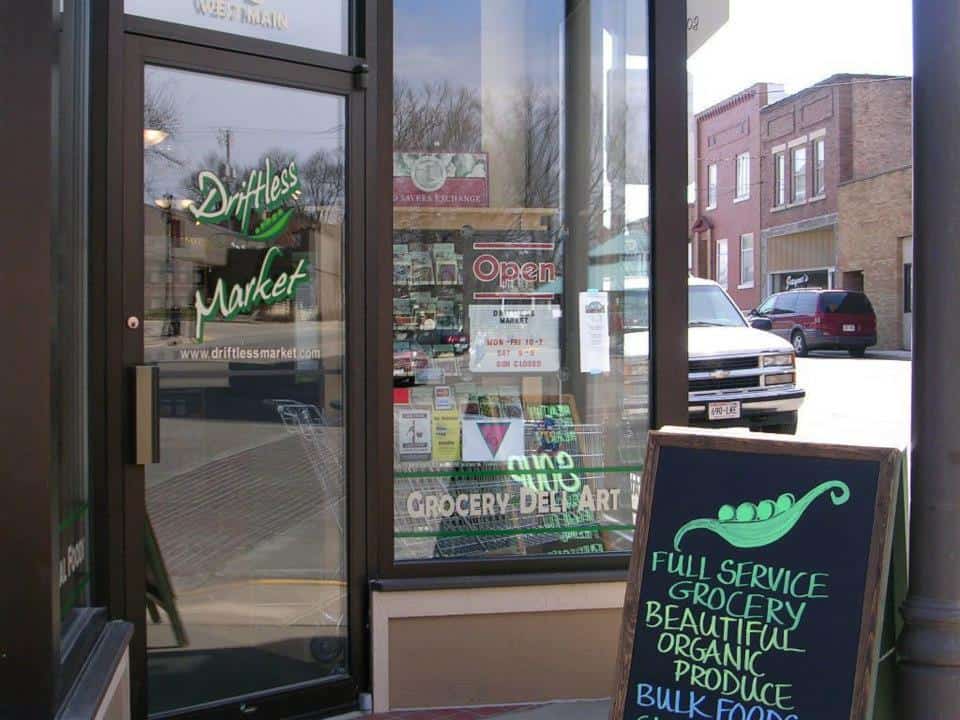
An example of a good store front. Great door & window signage, and sandwich board. Driftless Market, Platteville, Wisconsin. Photo courtesy of Lyn Falk.
Guest post by Lyn Falk
Retailworks, Inc.
Your storefront says a lot about you and your business, actually. It’s your customer’s first impression of your brand. When competing with the big box retailers that are inevitably on the outskirts of your town, you need to turn on the charm––something the national chains can’t compete with!
Think of someone entering your store as a guest coming to your home.
You’d want your address visible from the street, your yard looking good, the front sidewalk swept, and your flowers deadheaded, right?
Similarly, your store’s facade should welcome visitors, and quickly tell them what you do.
How does your storefront measure up? Ask yourself, or a trusted friend or two, the following questions about your facade:
- Is it obvious what you do?
- Are your brand colors identifiable on your exterior?
- Do you have window displays that inform and/or inspire?
- Is your façade clean and well-lit?
Here are some tips on how to create a memorable, branded facade:
- In addition to a large logo-sign visible to those driving by in automobiles, prominently display the name of your store at eye level for pedestrian traffic
- List services, store hours and website on your door and/or windows
- Create displays that get people talking [in a good way!]
- Integrate your brand’s colors, ie: paint your front door and/or add a colorful awning
- Incorporate decorative accessories such as potted plants, flags, banners, or sandwich board, that celebrate the seasons and/or reflect your brand.
- Keep the door open on nice days to invite curious passers-by inside.
- Work with your neighbors and/or the powers that be in your community to create a parklet.
And finally, is your facade well-maintained? A little TLC can go a long way in creating a more professional look and leaving a credible impression on those driving or walking by.
Never underestimate the power of a well-designed storefront!
———-
Lyn Falk is the owner, educational speaker and interior designer at Retailworks Inc, an award-winning, nationally recognized design firm located in Mequon, Wisconsin, in the US. Lyn has over 25 years of experience teaching independent retailers and business professionals how to build healthy, purposeful and productive spaces that move hearts, minds, and merchandise.
More photos from Lyn’s Main Street visit to Platteville, Wisconsin, in April 2013.
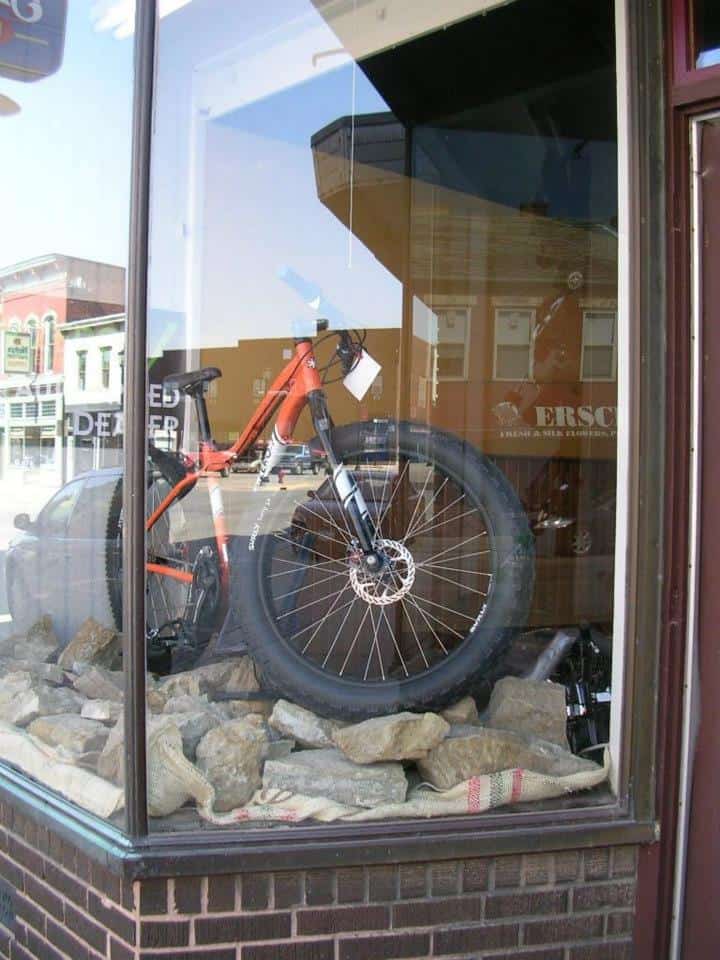
Simple, eye catching, effective window display. Momentum Bikes, LLC, Platteville, Wisconsin. Photo courtesy of Lyn Falk.
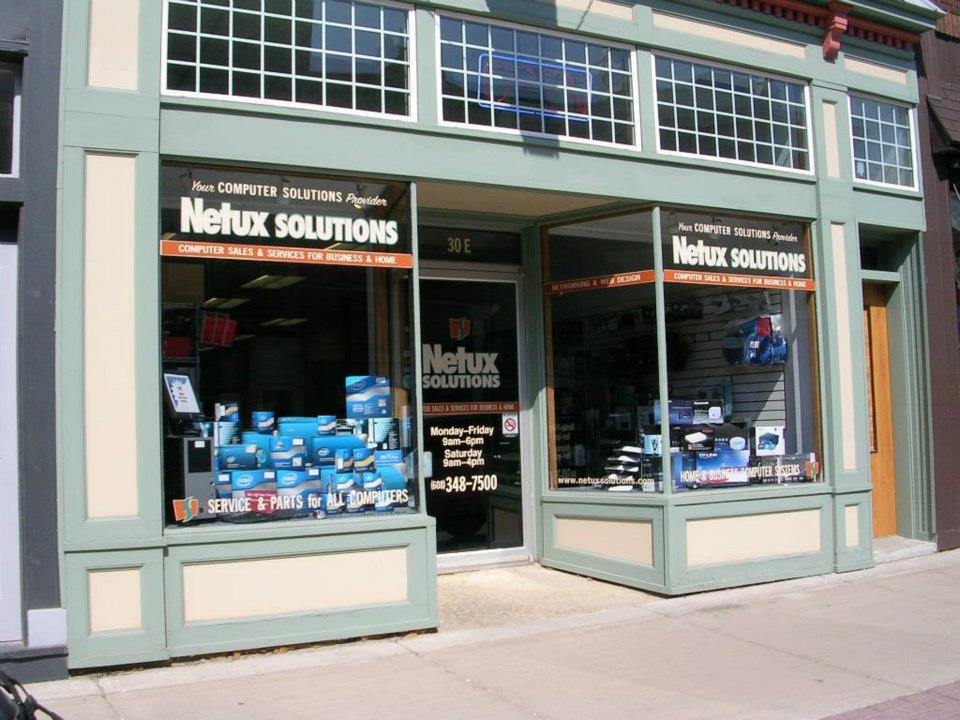
Great signage and window display. Netux Solutions, LLC, Platteville, Wisconsin. Photo courtesy of Lyn Falk.
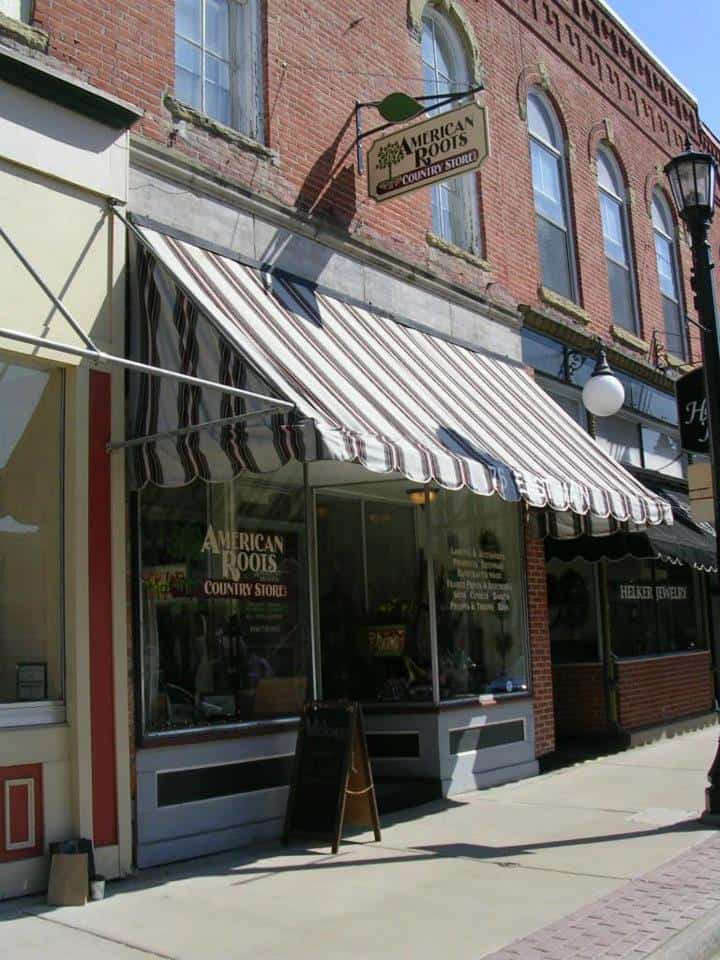
Great signage, welcoming awning and sandwich board. American Roots Country Store, LLC, Platteville, Wisconsin. Photo courtesy of Lyn Falk.
New to SmallBizSurvival.com? Take the Guided Tour. Like what you see? Get our updates.
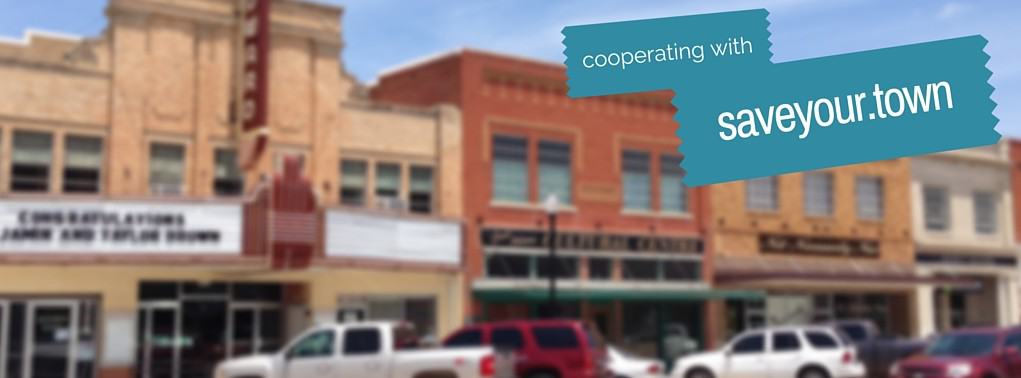







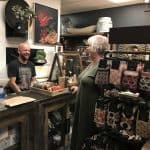


It’s also important to note the role of property owners and local preservation groups in maintaining attractive, historically appropriate storefronts.
Many small towns, mine included, have been afflicted by “man with a van” renovations. It was easier to demolish a historic facade and quickly replace it with a modern replacement, such as plate glass and synthetic stucco. It’s visually jarring to see a Main Street-scape interrupted by the architectural equivalent of a Wal-Mart grafted onto a building.
However, my town also enjoys a renewed architectural appreciation that began 30 years ago as a private citizen effort. Over time, guidelines were developed to codify downtown renovations to preserve the building heritage. While some property owners decry this oversight, claiming it’s too restrictive, the results speak for themselves and the premier retail properties (and their agreeable owners) are those with the most architectural character.
Places like Platteville, WI are a great example of how different parties (business owners, property owners, and preservation groups) can cooperate to advance their own interests while improving the overall sense of place. It can be a lot of work, but any worthwhile endeavor usually is.
Brian Wiedemann
Staunton, VA
Thanks, Brian. I really appreciate your well thought-out comments.
Small towns have to balance the need for flexibility of businesses and protecting the rights of property owners with the need to protect the district as a whole. That’s never a simple issue. At the Illinois State Section of APA (American Planning Association) conference I attended this week, it was clear that planners at least take a long term view of preservation, and I find that encouraging.
How the business looks like can really affect the reaction of your potential clients. But it does not stop there. You also need to improve the look and feel inside your store. It does not stop with how it looks like. How it smells like, how it sounds like and how it feels like also matters. So make sure that you also get your interiors right.
Ivan, yes! Interiors definitely matter, too.
Ivan – you’re so right! The interior of a store is extremely important to the customer experience and overall success of the business. It has to reflect the store’s “brand” and mission statement. It needs to stimulate all the senses, and inform, inspire and motivate customers to purchase. A strong color palette, the correct lighting, visible traffic patterns, strategically placed focal points, effective merchandising techniques, and a coordinated sign system are all necessary elements to creating a memorable and profitable shopping environment.
Great article and great comments. I particularly agree with Brian. In the UK small shops are being priced out by big companies. The big brands move in as soon as a small town has acquired the footfall by offering an alternative shopping experience. Problem is the big companies attract more big companies and pretty soon the small town has lost the very quality which attracted the big players in the first place. Wouldn’t it be nice if just for once the town planners and property owners put the small shop owners and customers ahead of short term gain. In the log term they would have a steady income for many years, instead of the boom and bust peaks and troughs as big businesses move away leaving empty, deserted shopping areas in their wake.
Ray, boy, if there is one thing that small towns should understand by now, it’s the danger of the boom and bust cycle. My own town is going through a boom spurred by oil and gas development, and it has benefited my business. I’m trying to make sure my business will survive the bust, too.